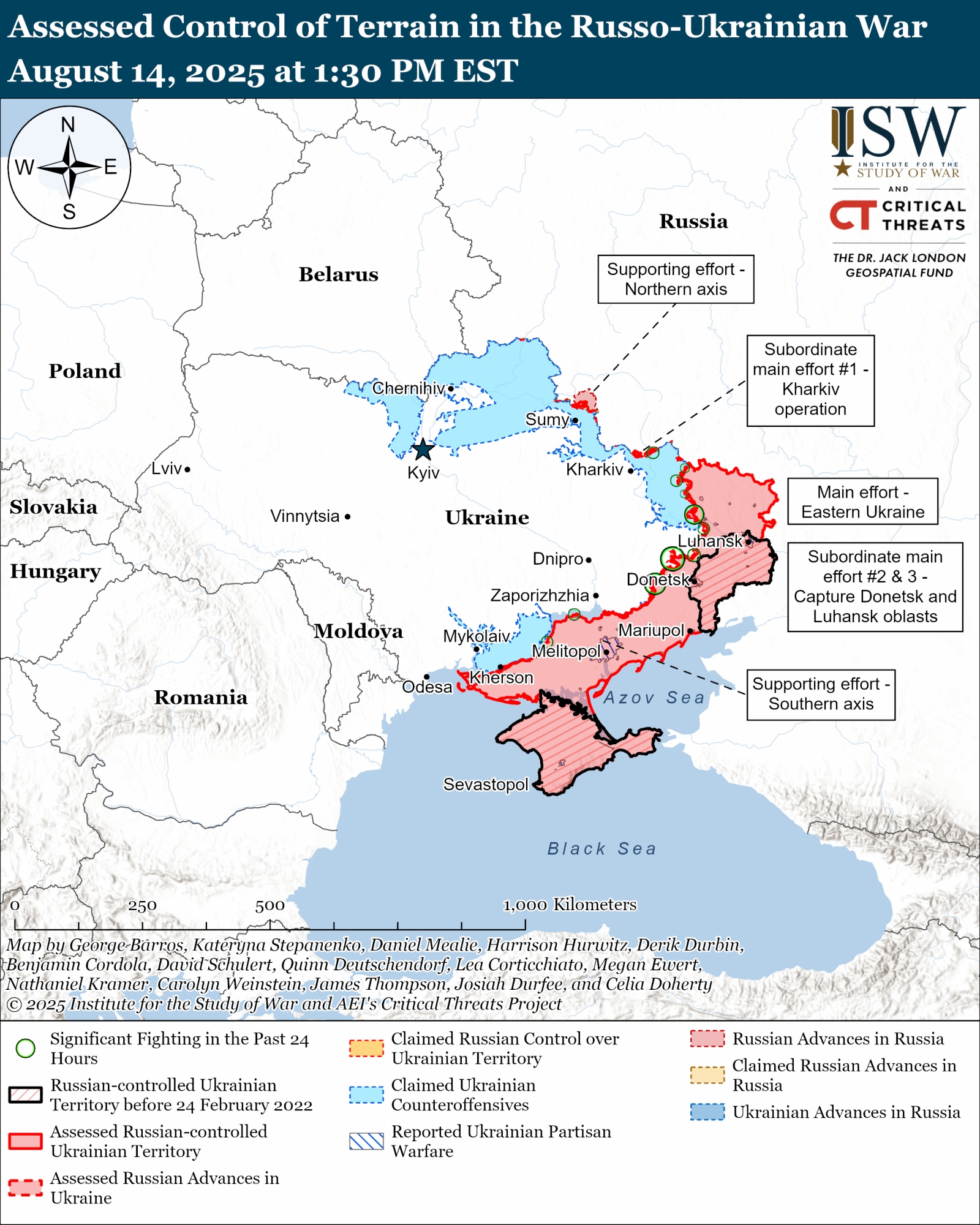© The Indian Express Pvt Ltd
Latest Comment
Post Comment
Read Comments
 US President Donald Trump and Russia President in Helsinki, 2018. (AP)
US President Donald Trump and Russia President in Helsinki, 2018. (AP)The American and Russian Presidents will meet in Anchorage, Alaska on Friday (early hours of Saturday in India) to discuss, possibly decide, the future of the war in Ukraine.
Ahead of the meeting, US President Donald Trump has repeatedly spoken about a “land swap” which, he says, will help end the fighting. “There’ll be some land swapping going on,” Trump told reporters earlier this week.
Russia currently occupies around a fifth of Ukrainian territory. Ukraine holds next to no Russian land. So what might a potential land swap entail?
Status of war
Three and a half years into the war, Ukraine is well and truly on the defensive.
According to Reuters, Russia currently controls 114,500 square km (more than 19%) of Ukraine, including Crimea and a major chunk of territory in eastern and southeastern Ukraine. Some estimates peg this number to be even higher.
Ukraine, on the other hand, controls next to no Russian territory. After making significant gains in Kursk last August-September, Ukrainian forces were pushed out of Russian soil by March this year.
 Credit: Institute for Study of War
Credit: Institute for Study of War
As things stand, Russia holds all of the initiative in the war: with Ukraine running out of men to send to the frontlines, Russian forces continue to make steady progress.
If the fighting were to continue in its current tempo, experts suggest Russia would occupy all of the four eastern and southeastern Ukrainian provinces of Luhansk, Donetsk, Zaporizhzhia, and Kherson. At the moment, Russia holds almost all of Luhansk, and about three-quarters of Donetsk, Zaporizhzhia and Kherson, Reuters reported.
Putin officially incorporated all four provinces as Russian territory in 2022, shortly after the war began.
Russia also controls small pockets of land in the northern Kharkiv, Sumy, Mykolaiv and Dnipropetrovsk regions of Ukraine. Russia has said it is carving out a buffer zone in Sumy to protect Kursk from a future Ukrainian attack.
Russia has held Crimea since 2014. While Kyiv publicly maintains that the peninsula is Ukrainian territory, in private, officials have long admitted that getting Crimea back by force would be next to impossible at this point of time.
Swap or surrender?
Earlier this week, Trump had said that Russia had occupied some “very prime territory”, and he would “try to get some of that territory back”.
But since Ukraine currently holds no Russian land that can be leveraged in a negotiation, many have wondered what Trump’s land swap would entail.
Moscow wants Ukraine to unilaterally withdraw from all of the strategically and economically vital Donbas region, comprising provinces of Donetsk and Luhansk, multiple media reports from this week have suggested.
If Kyiv were to agree — and that is unlikely — this would entail pulling Ukrainian troops back and ceding some 6,600 sq km it still holds onto in this region.
In return, Moscow would be willing to freeze the frontier in Zaporizhzhia and Kherson, return the small pockets of land it holds in northern Ukraine, and possibly concede the even smaller pockets of land Ukraine still holds in Kursk.
Ukraine Commander-in-Chief Oleksandr Syrsky in June had said that despite Russian claims to the contrary, Ukrainian forces still held some 90 sq km of Russian territory in Kursk.
Even if this were to be true, whatever Russian land Ukraine holds is incomparable in size and strategic importance to the Ukrainian land held by Russia.
This is why the talk of swapping land has been perceived more as a surrender in Ukraine.
“We will not leave Donbas. We cannot,” Ukraine President Volodymyr Zelensky of Ukraine told local media this week.
No good options
Given it has no leverage on the battlefield, Kyiv will be hoping that Western sanctions are hurting Moscow enough to force Putin to make some concessions.
Such hope is not altogether unjustified: the latest secondary sanctions will potentially leave a massive hole in Moscow’s budget, and Trump has promised to further squeeze Putin if Russia does not agree to make peace.
That said, the Russian economy has thus far been remarkably resilient against Western pressure. Even if the economy were to be in terrible shape, that alone is no guarantee of a Russian capitulation in what Moscow views as a fight against an existential threat.
In this context, experts suggest that the best-case scenario for Ukraine at the moment would be for the conflict and battlelines to be frozen.
In theory, this would buy Ukraine some much needed time to rebuild its manpower base and economy, both of which lie in tatters at the moment. At the same time it would also give Russia time to recoup, and potentially prepare for another future invasion — something that Kyiv believes is an inevitability.
As Al Jazeera defence editor Alex Gatapoulos puts it: “This is a really dangerous time for Ukraine.”